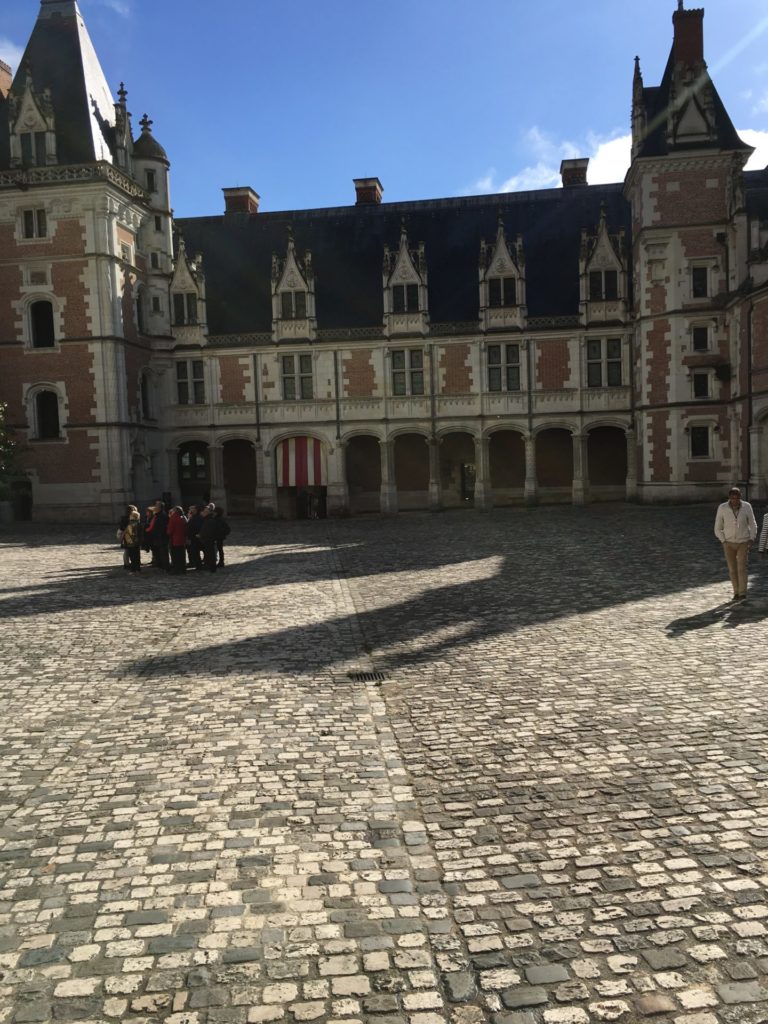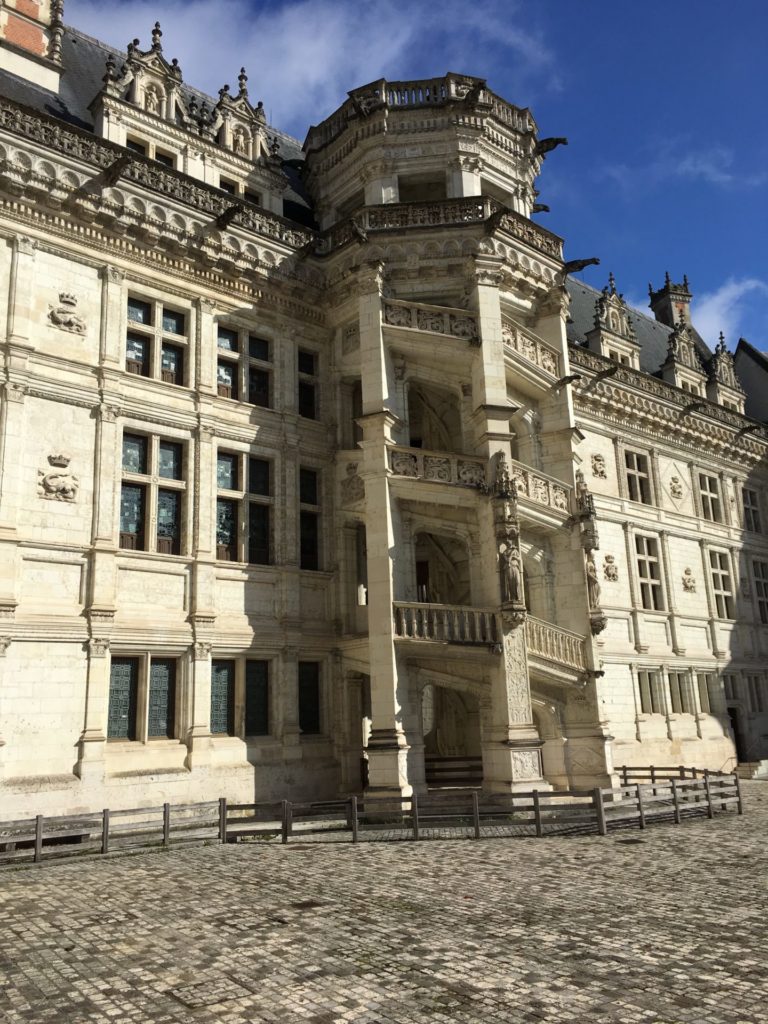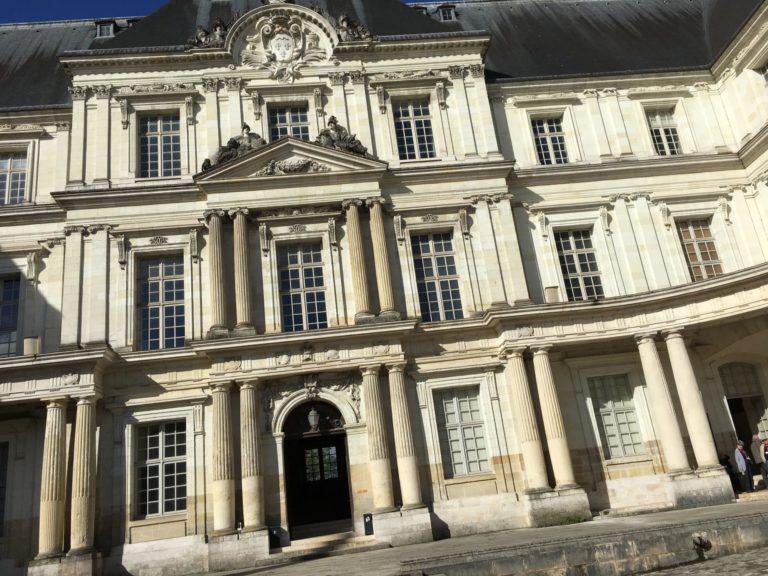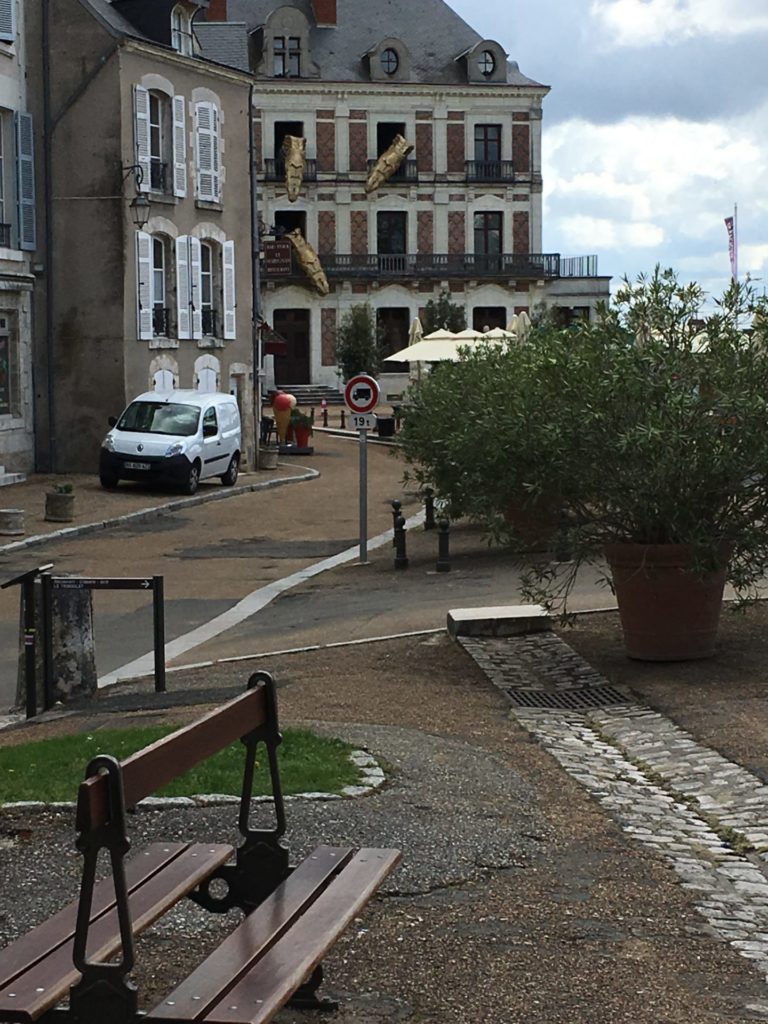On the Road is a weekday feature spotlighting reader photo submissions.
From the exotic to the familiar, whether you’re traveling or in your own backyard, we would love to see the world through your eyes.
Today Auntie Anne takes us through another splendid Loire Valley château, the Château of Blois, a massive construction with multiple additions made over many centuries. It was the home of many French kings, queens, and other nobles, but is now a public museum so that the French, and others, can see how royalty lived in centuries past. No formal gardens in this château, but some amazing architecture!
Auntie Anne
The residence of several French kings, Blois is also the place where Joan of Arc went in 1429 to be blessed by the Archbishop of Reims before departing with her army to drive the English from Orléans.
The Château of Blois effectively controlled the town of Blois and comprises several buildings. Construction of these buildings began in the 13th century and ended in the 17th century. You can see three distinct architectural styles in the chateau’s facade from the interior courtyard.

This is the Gothic wing, built by Louis XII (1462-1515).

Detail showing the main entrance and a statue of Louis XII over the door.

Renaissance wing, which dates from 1515-1524, and was built by Francois I. He intended to move his court from Amboise, but lost interest in the chateau after his wife died in 1524. Francois also built Chambord. There is Italian influence in the architecture of this wing, and its most renowned feature is the spiral staircase. This spiral staircase predates the more famous one in Chambord and was intended so that the court could watch the king ascend or descend to his rooms.

Classical wing built by Francois Mansart in 1634. Louis XIII gave the Château of Blois to his brother and heir, Gaston of France, Duke of Orléans as a wedding gift. Gaston began a large reconstruction project (resulting in this wing) but when Gaston’s nephew was born, the future Louis XIV, Gaston was no longer the heir and no longer eligible for financing.

In a villa across from the chateau, is an enormous mechanical dragon clock. It is an homage to Jean Robert-Houdin, a famous magician and illusionist.
I took this photo during the hourly display.

Amir Khalid
The rich and powerful knew how to build really nice digs in the old days, didn’t they? Not like some rich folks today.
John Revolta
Very cool.
JPL
@Amir Khalid: Lasting treasures.
debbie
Love the architecture. Apparently, I live in the wrong country and the wrong century.
debbie
I found this video of the mechanical dragon.
stinger
What an interesting chateau! Thank you, Auntie Anne, for the correct use of “comprise”. And your description of the spiral staircase in the Renaissance wing has given me furiously to think, mon ami, about the words “court” and “courtyard”.
Laura Too
Awesome, thanks!
JCJ
Love your pictures. My wife and I made the Loire Valley trip in 2001. These are a great reminder!
currants
Love the photos–Thank you! At first glance I thought it was the Hospices de Beaune, but that’s in Burgundy, so it’s nice to see pictures of (and read about) a place I haven’t visited. That spiral staircase is….wow. And the idea of losing interest in moving after the death of your partner makes sense, I suppose, but I’m a poor peasant, I guess, because the idea of dropping that much on a new chateau and then just turning away is…also wow. (I’m so articulate this morning. Must get more coffee.)
Boris Rasputin (the evil twin)
It’s always interesting to see how buildings were added to and remodeled over time. The Chester Cathedral was built on the remains of an early church (which might have been on the site of a pagan shrine) and redone, restored, added on to, etc. for centuries. In a world where something is built and that’s it, the perspective of centuries is wonderful.
Elizabelle
Here’s website on the Chateau de Blois, in English.
Wiki and website inform that, after all that money spent, the castle went unused and fell into disrepair for 130 years. A lot of the royal furnishings and decorations were removed. Louis XVI tried to sell it in 1788, but no takers. It ended up being used as a military barracks for decades, and then its restoration began in the 1840s.
Thank you, Annie. I would like to see this. Have never been to the Loire valley.
A woman from anywhere (formerly Mohagan)
Thanks for the evocative pictures. My husband and I were scheduled to visit and have lunch at Blois a couple of days ago on our canceled Loire Valley trip. Sigh. Oh well. Maybe in a couple of years it may be possible …